Jewish Tours to Kiev and around Ukraine

We offer the most popular and famous Jewish places in Ukraine, such as Uman', Medzhybizh and Berdychiv. Possible different combinations of this destinations in a tour program. As well as you can request any another place of your interest, and we will optimize the route.
Medzhybizh (Khmelnytsky province)
Uman` (Cherkasy province)
Berdychiv (Zhytomyr province)
Odessa
Drohobych (Lviv province)
1) Kyiv - Uman', 210 km
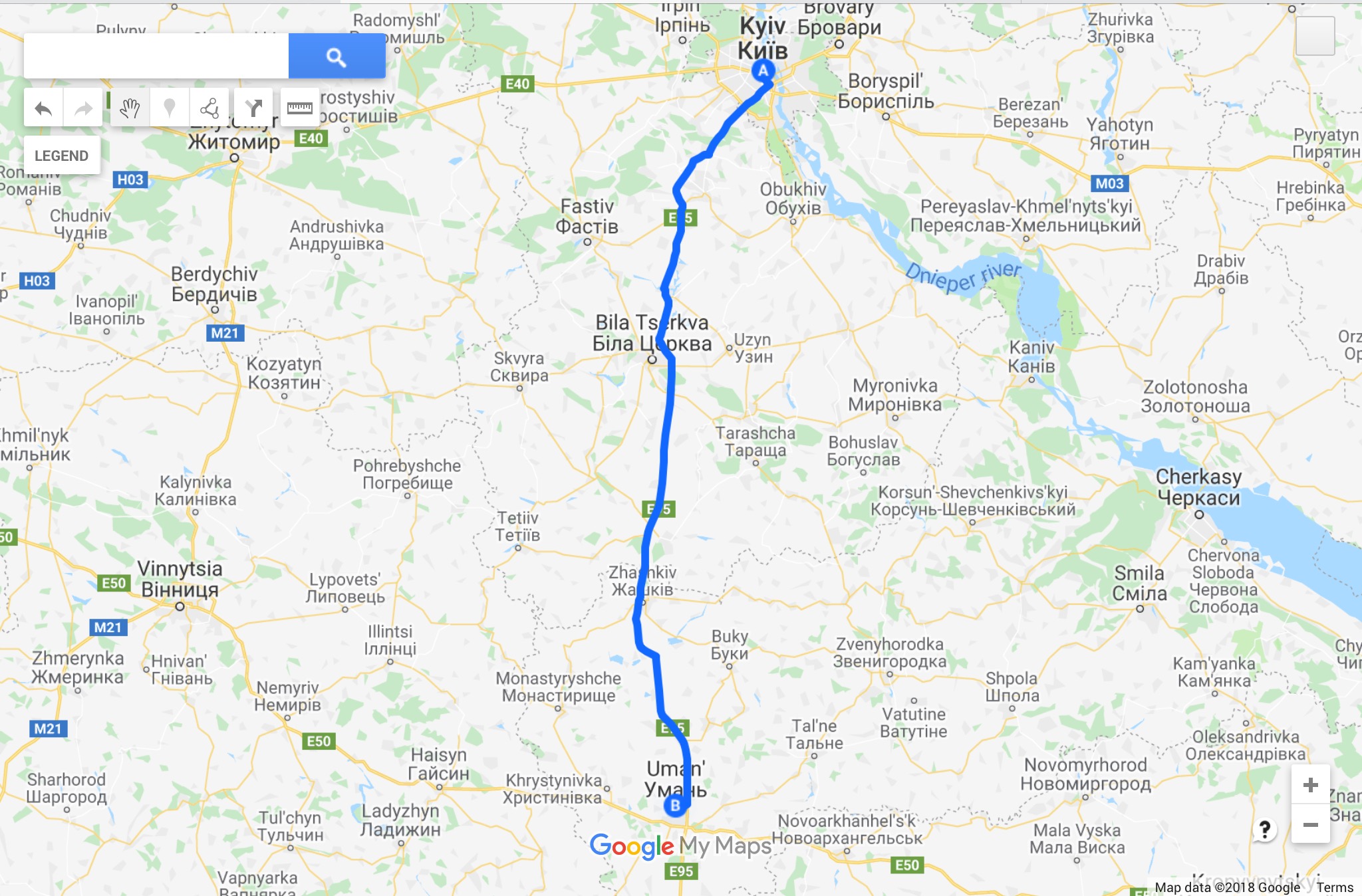
2) Kyiv - Zhytomyr - Berdychiv, 185 km
Kyiv - Zhytomyr - Berdychiv - Khmilnyk - Medzhybizh, 320 km
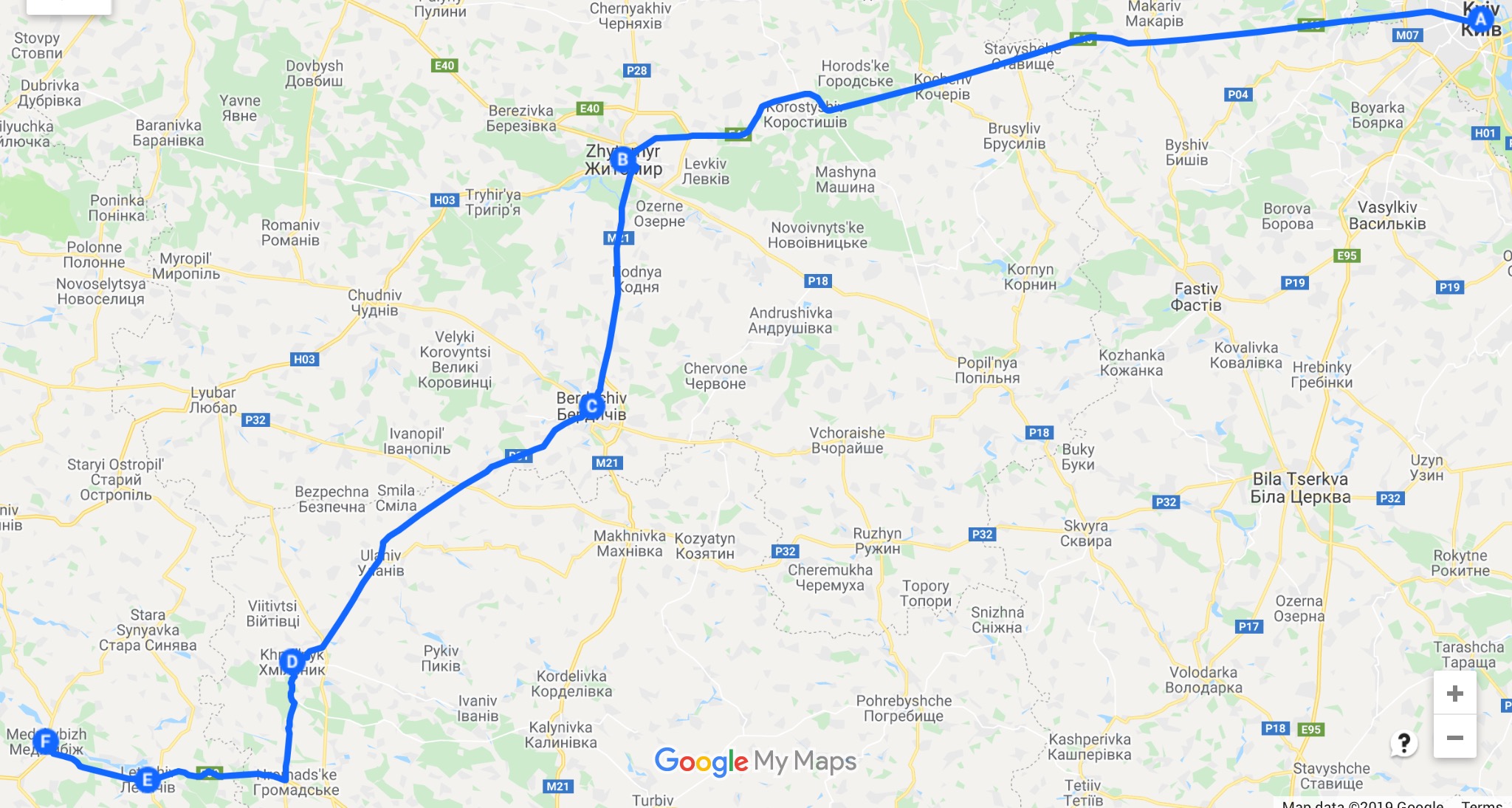
3) Jewish tour "The Big Ring", 780 km
Kyiv - Uman' - Haisyn - Vinnytsia - Letychiv - Medzhybizh - Berdychiv - Zhytomyr - Kyiv
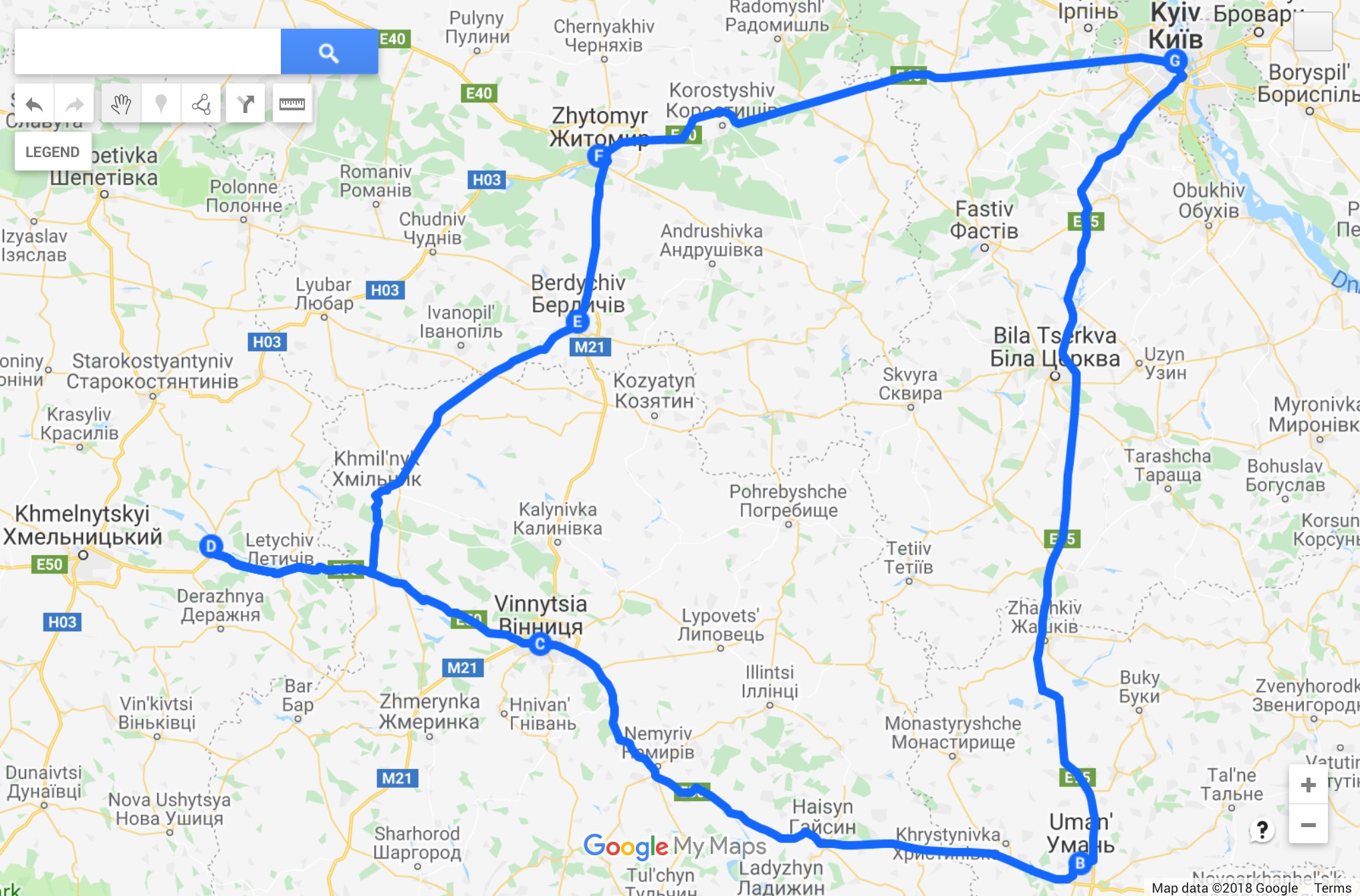
On the territory of Ukraine there are many places connected with the Jewish history, culture and religion. Probably, the most famous are: Uman', Odessa, Kamyanets-Podilskyi, Medzhybizh, Berdychiv, Lviv, Chernivtsi and others.
Cities of Ukrainian provinces of the Russian Empire with more than 25% of the Jewish population in 1897...
Jewish population of Kyiv province of Russian Empire in 1897...
Jewish population of towns of Kherson province in 1897...
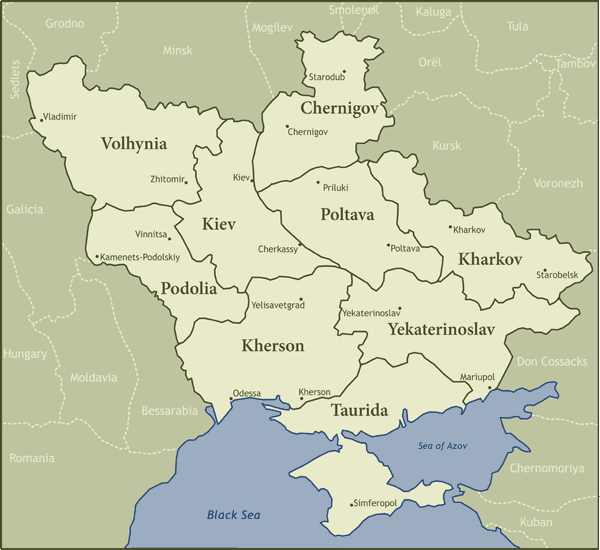
The Pale of Settlement, pronounced in The Russian Empire, from the first side, limited settlements of Jewish, and from another side, it prohibited to do the farming, and that's why Jewish had to settle in the small villages and towns (Mestechko, Mistechko, Shtetl, Shtetlekh). These consequences created such unique tradition and culture of the small towns all arround the territory of the Western, South-Western and central Ukraine.
There are dozens of such not big towns in Ukraine, and maybe even hundreds. They are in every modern provinces (oblast')of modern Ukraine. Very often they have been saving the material evidence of that epoch till nowadays.
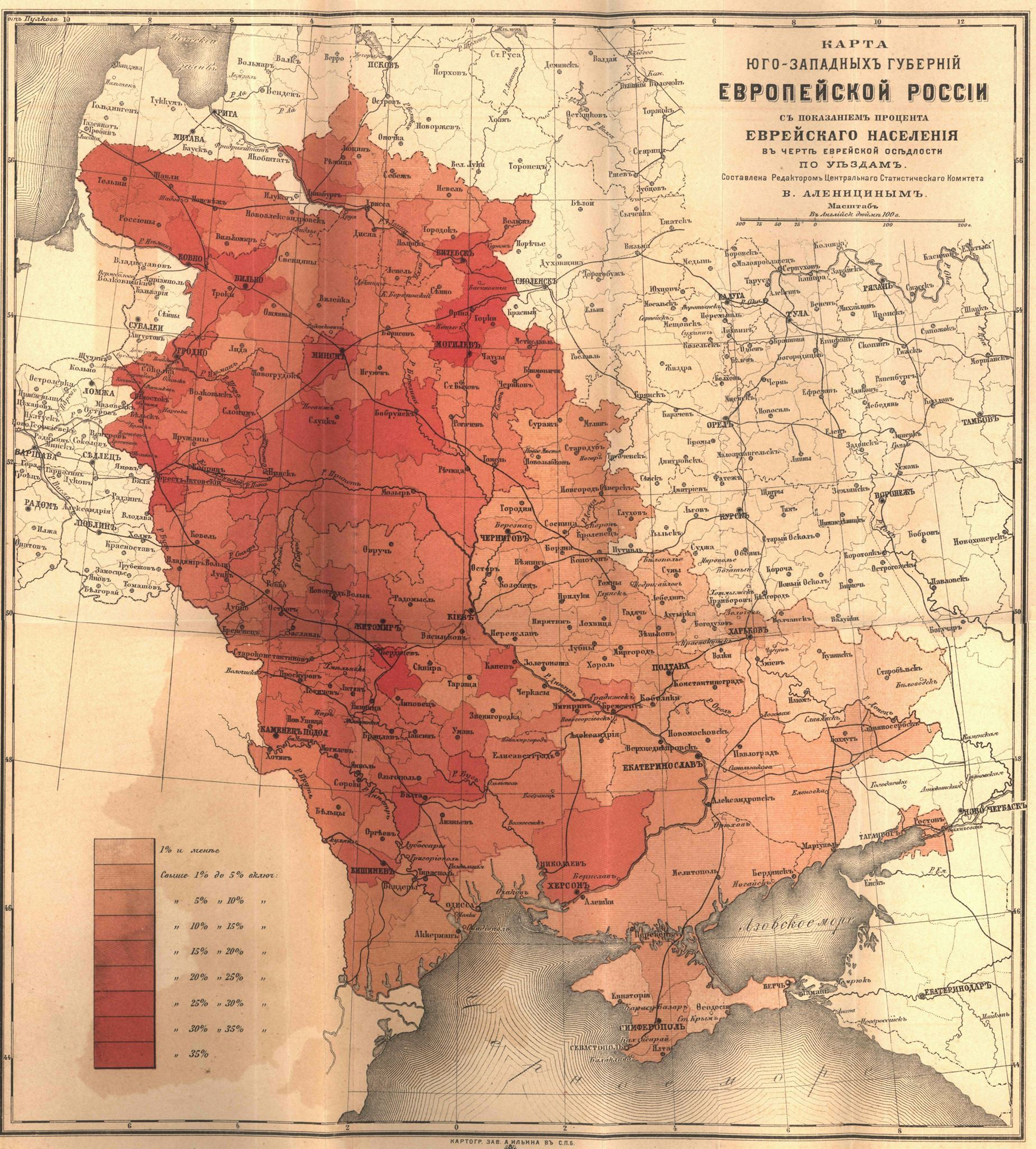
Map of the southwestern provinces of the Russian Empire with an indication of the percentage of the Jewish population within the Jewish Pale
The proposed list of the towns isn't completed. And we will plan with pleasure your customized and personalized tour to the places of your interest.
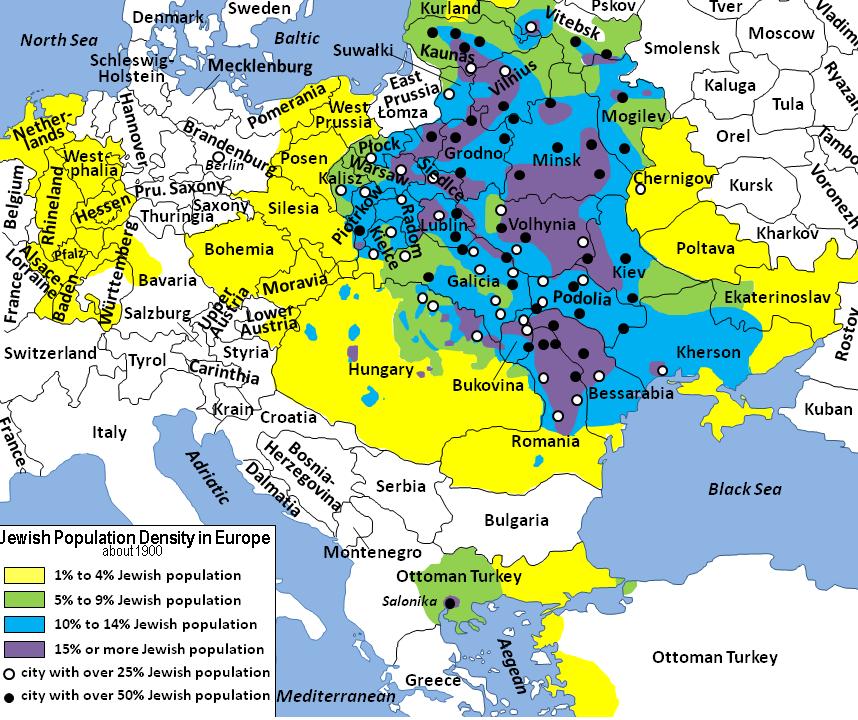
Podolia Gubernia (province)
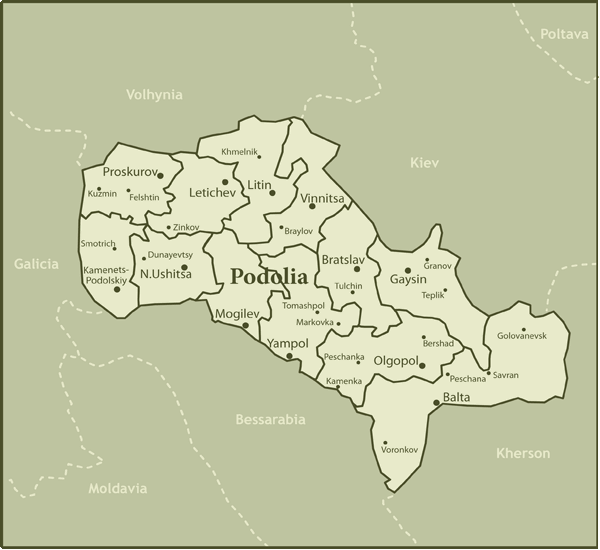
The population density of Podolia Gesher (province, gubernia), according to the census of 1897, was 82,1 inhabitants per square versta (1 Russian sq versta = 1,1236 sq kilometer). Podillya province took the second place after the Moscow province in European Russia in a population density (not counting the provinces of the Kingdom of Poland).
The most populated was Kamenets district (uezd) - 105 inhabitants per sq. versta, the least populated was Balta district (uezd) - 52,5 per 1 sq. versta.
The number of settlements in the province was 7.207 in 1897, including 17 cities and 120 small towns (shtetlekh, mistechko - Ukrainian, mestechko - Russian).
In 1872, the total population was 1.954.627 inhabitants. And according to the census of 1897 - 3.031.513 (1.516.760 men and 1.514.753 women), which was about 2% of annual growth.
In 17 cities 221.870 people lived, or 7.4% of the province population (under the census of 1897).
92,6% of the population of Podolia province lived In a countryside - in 1666 villages, 150 largest villages and farms - 2.796.429 inhabitants (1897).
Bukovina (Bucovina)
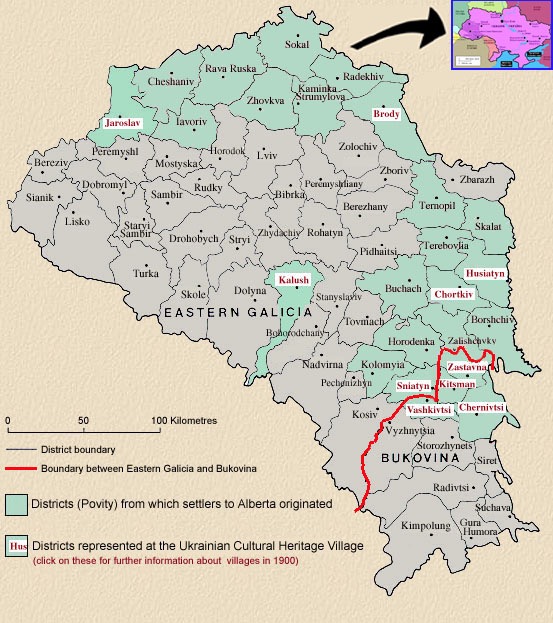
Bukovina as a part of Austria was dominated by a two-ethnic Ukrainian-Romanian character, but with a significant proportion of Jews and Germans, as well as some ethnic groups and denominations.
After the administrative reform of 1850, the Duchy of Bukovina was divided into the city of Chernivtsi (Czernowitz) and 15 counties (povit - Ukrainian, uezd - Russian, bezirke - German):
Dorna
Putyla
Vizhnitsa (Viznitz - German)
Kimpolung (Dovhopil - Ukraiain)
Solka
Guragumora (Gurahumora - German)
Seret (Sereth - German)
Vashkivtsi (Waszkoutz - German)
Sadgora
Storozhinets (Storojinetz - German)
Kitsman (Kotzman - German)
Zastavna (Sastavna - German)
Suceava (Suczawa - German)
Radivtsi (Radautz - German)
Chernivtsi (outskirts)
After the administrative reform of 1865-1867, the number of counties was reduced to 11.
The religious composition of the population of Bukovina:
Jews in the population of Bukovina:
1857 - 29.187 (6,39%)
1880 - 67.418 (11,79%)
1910 - 102.919 (12,9%)
Due to unfavorable conditions, the emigration of the population became mass, mainly in the USA and Canada. In the years 1891-1910, about 50 thousand people left Bukovina.
Kiev Gubernia (province)
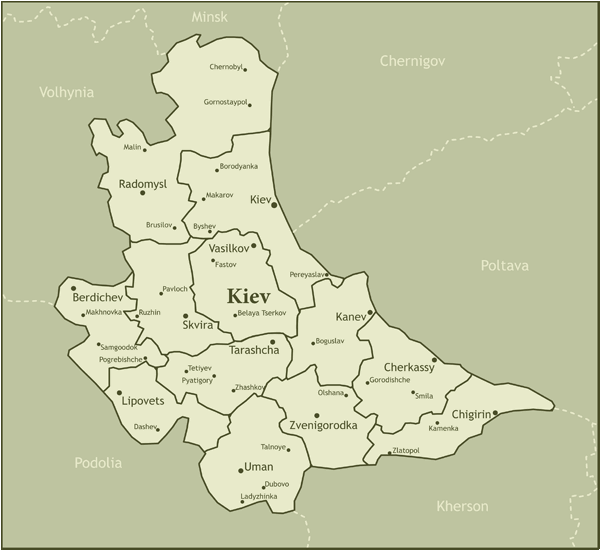
Jewish speaking population in towns of Kiev Province (1897):
total in the province - 31%
Kiev - 12,1%
Berdychiv - 77,1%
Vasylkiv - 39,1%
Zvenigorodka - 37,6%
Kaniv - 30,6%
Lipovets - 47,6%
Radomyshl - 68,5%
Skvyra - 49,6%
Tarashcha - 43,6%
Uman - 57,1%
Cherkasy - 36,9%
Chygyryn - 29,6%
Pictures of realized private Jewish tours are in photoalbums:
Podolia Gesher, Vinnytsia oblast, Tyriv district, Voroshylika
Shtettls Teplyk & Haisyn
The report of one of Jewish Tours: http://teplyk2017.blogspot.com/2017/03/journey-to-teplyk-travel-to-roots-of.html
Kiev & Ukraine Private Jewish Tour Guides
Holubtsi (Stuffed Cabbage)
 Holubtsy, or stuffed cabbage leaves, is one of the most popular dishes in Ukraine. Similar foods are cooked in many other countries, including those of the Mediterranean and Caucasian regions. Groats mixed with minced meat and wrapped in vine, cabbage or beet leaves are among the specialties of many national cuisines. Until the late 19th century, in Ukraine, holubtsy were stuffed mainly with millet, buckwheat or corn groats. Yet, starting from the second half of the 20th century cooks have been using rice and minced meat as the filling. For the wrapping material, people traditionally used cabbage or sauerkraut leaves, which were substituted with boiled beet tops in the spring. In southern and south-western regions young vine leaves enjoyed much popularity. Nowadays, it is mainly cabbage that is taken as the wrapping for holubtsi.
Holubtsy, or stuffed cabbage leaves, is one of the most popular dishes in Ukraine. Similar foods are cooked in many other countries, including those of the Mediterranean and Caucasian regions. Groats mixed with minced meat and wrapped in vine, cabbage or beet leaves are among the specialties of many national cuisines. Until the late 19th century, in Ukraine, holubtsy were stuffed mainly with millet, buckwheat or corn groats. Yet, starting from the second half of the 20th century cooks have been using rice and minced meat as the filling. For the wrapping material, people traditionally used cabbage or sauerkraut leaves, which were substituted with boiled beet tops in the spring. In southern and south-western regions young vine leaves enjoyed much popularity. Nowadays, it is mainly cabbage that is taken as the wrapping for holubtsi.
Holubtsi Umanski (Uman Stuffed Cabbage)
Clean the cabbage and remove the stalk. Bring some salted water to the boil in a large saucepan and cook the cabbage in it for about 5 minutes. Remove the cabbage and leave to drain. When the cabbage has cooled off, remove the leaves and place them on a clean cloth. Cut the leaves in halves and remove the thick parts. Mince the meat, carrot and one onion, add rice or millet, and pepper and mix thoroughly. Divide the filling between the cabbage leaves and roll them up. Put the rolls in an ovenproof dish, pour in the sauce, bring to the boil and then reduce the heat and leave to braise. To cook the sauce, add citric acid and sugar to the broth and season with salt and pepper. When the holubtsy are almost done, add the tomato paste and sour cream and bring to the boil again. Serve holubtsy hot with sour cream or sauce.
(0.5 kg pork, 0.5 kg beef or veal, 2 onions, 1 carrot, 1 large white cabbage, 1 cup rice or millet, salt, pepper, sugar Sauce: I liter broth, 0.5 cup tomato paste, 0.5 cup sour cream, salt, pepper, citric acid, sugar)












